Acoustic Systems
-
- DOLPHIN: Enabling Technology for Acoustic Systems Marine Technology, Apr 2019 #20
DOLPHIN Signal Processing Technology
Acoustics enable many core undersea capabilities. Where radio waves do not propagate well, and light is absorbed quickly, acoustic signals help us map, see, locate and communicate. The many products and technologies that employ acoustics all depend upon signal processing, thus new processing approaches can impact many applications. QinetiQ North America (QNA) and its partner Optimal Systems Laboratory (OSL) have developed DOLPHIN - a patented method using analog cancellation that eliminates receiver saturation and enables simultaneous transmit and receive. Figure 1 describes this concept.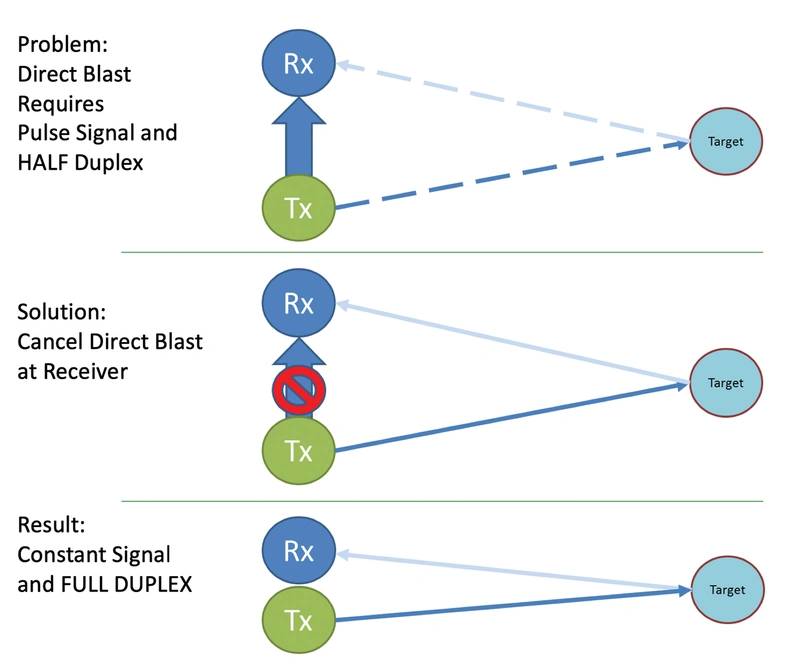 Figure 1: The basic concept of DOLPHIN. Image: QinetiQ North AmericaApplication to Underwater Telemetry
Figure 1: The basic concept of DOLPHIN. Image: QinetiQ North AmericaApplication to Underwater Telemetry
Since the beginning of acoustic communications, the state of the art technology has been limited to half-duplex signals: transmit with the receiver off and then turn the transmitter off and receiver on and wait to receive, because the direct transmission at the source saturates the receiver electronics if they are enabled simultaneously.Ocean physics are fixed, but DOLPHIN technology enables true full-duplex acoustic telemetry. It cancels the transmit signal at the receiver in real-time. This eliminates receiver self-signal saturation and enables simultaneous transmitting and receiving on the same frequency, with collocated transducers. The DOLPHIN technology is frequency and range independent - thus yielding flexible new approaches to underwater communications and sensors.
In practice, the impact of full duplex comms vs standard half duplex comms can be viewed in terms of the change in data throughput (speed of receipt of meaningful information). This can be generically viewed in terms of data rate vs range. Figure 2 shows a generalization of the benefits of DOLPHIN Comms vs traditional approaches.
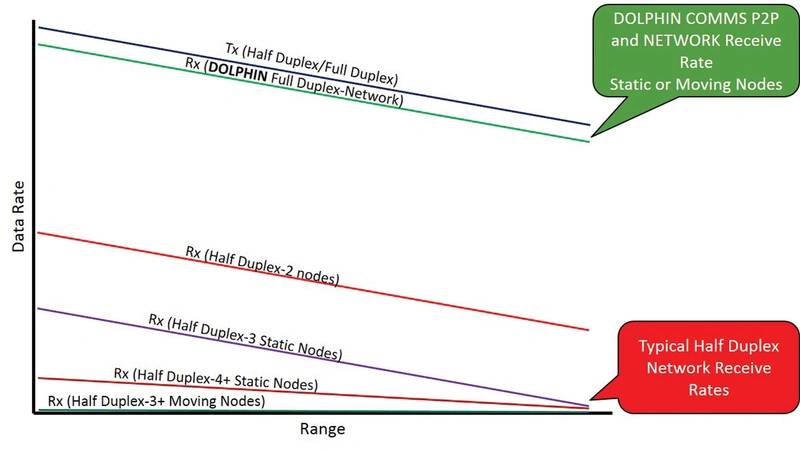 Figure 2: DOLPHIN Receive Rate vs. Conventional Receive Rates. Image: QinetiQ North America
Figure 2: DOLPHIN Receive Rate vs. Conventional Receive Rates. Image: QinetiQ North AmericaThe positive benefits are particularly clear as the number of nodes in a half-duplex (mobile or static) network increase. While increasing nodes degrades the overall throughput of conventional, half-duplex networks, modeling and testing show that DOLPHIN Comms networks will maintain consistent performance. This is even more evident in networks of moving nodes where half-duplex networks generally cease to function with more than two nodes. But full-duplex networks of more than two moving nodes are possible and maintain high data throughput. This demonstrates the value of the DOLPHIN Comms technology in enabling networks of moving nodes, like swarms of UUVs.
A more concrete example of the benefits can be seen by considering the case of two UUVs attempting to communicate using Assured Data Communications. This is depicted in Figure 3. Traditional half-duplex approaches require an acknowledgement from the receiving node for each packet that is sent and take 20 seconds, in this example, to deliver a data message between UUVs. But using a DOLPHIN full-duplex approach can deliver up to a 400% improvement of throughput. To be clear, this improvement is entirely due to the signal processing approach, the overall limitations of acoustic transmission remain. Or to put it a bit casually, while the laws of physics have not changed, DOLPHIN Comms provides better lawyers.
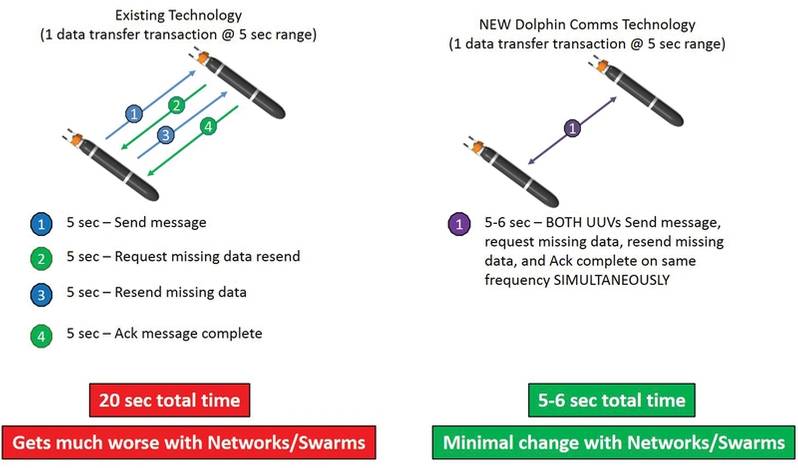 Figure 3: Data Throughput Improvements for UUV Case Study. Image: QinetiQ North AmericaApplication to Mapping Sonar
Figure 3: Data Throughput Improvements for UUV Case Study. Image: QinetiQ North AmericaApplication to Mapping Sonar
This same technology can be applied to side-scan sonar (SSS), a very common tool for seafloor mapping and survey, and synthetic aperture sonar (SAS) an emerging technology. Typically, SSS presents a “gap” in the coverage it offers, as in Figure 4. This gap, or “Nadir” separates the left side sonar from the right to avoid interference.Because DOLPHIN enables transmission and reception of many signals in the water column simultaneously it allows for coverage to overlap. As shown in Figure 5, one set of signals, Sidescan A, is ensonifying a portion the same area as Sidescan B. In traditional sonar applications this would result in interference and lost data. But with DOLPHIN processing it is possible to interpret both signals and thus fill the nadir gap as in Figure 5.
This provides full swath coverage of a SSS or SAS with no gap. In fact, the forward scatter from either sidescan (A or B) can be used by the other sidescan (B or A) to improve the resolution in the area that both sides overlap.
In addition to the obvious benefit of improved coverage, DOLPHIN processing can provide other advantages to sonar systems including increased resolution and adaptability to environmental concerns such as marine mammal safety. Figure 4: Typical Side-scan displays a gap in coverage. Image: QinetiQ North AmericaLab and Field Testing
Figure 4: Typical Side-scan displays a gap in coverage. Image: QinetiQ North AmericaLab and Field Testing
DOLPHIN Comms and Sonar proof-of-concept (POC) demonstrations have been successfully completed. In tank and harbor trials, previously reported upon, DOLPHIN Comms delivered successful results. The system was able to demonstrate 65+ dB of analog cancellation in a highly reverberant, laboratory tank. Following tank trials, the development program moved to open water. This test included omni directional transducers, realistic frequencies and bandwidths, useful range distances, in highly reverberant conditions. The test demonstrated 80 dB of analog cancellation in a difficult and dynamic environment and the ability to scale to useful distances using commercial equipment, while maintaining robust, reliable full-duplex communications. The test was performed at 6% power (60 mW or 160 dB) and demonstrated its expected 1.6 Kbits/sec data rate, full-duplex telemetry.In sonar testing DOLPHIN has also shown promise. To date work has modelled 100% reconstruction of an image (nadir filling) and demonstrated DOLPHIN SSS and SAS in a laboratory environment. It has also demonstrated DOLPHIN SONAR operation in a laboratory environment with prototype equipment. The test case to date has used a 3 meter tank at 1 meter range with a 2 MHz frequency.
In addition, QNA has demonstrated the ability of the DOLPHIN SAS to be able to exceed the typical SAS Nyquist speed limitations. Conventional SAS can only advance as fast as the Nyquist speed, based on the specifications of the SAS. If one exceeds the Nyquist speed, the conventional SAS image fails completely. With a DOLPHIN SAS, one can exceed the Nyquist speed without losing signal. As a result, the image will gracefully degrade (blur) the more the sonar exceeds 2x the Nyquist speed. In other words, DOLPHIN SAS can at least double the standard SAS speed. It can even increase the speed, albeit with an increasing blurry image. Figure 6 was created in a test tank with a simple DOLPHIN SAS operating at 3x the Nyquist speed.
In 2018 QNA was awarded a contract from the Naval Surface Warfare Center, Panama City Division, (NSWC PCD), Panama City, FL to demonstrate advanced, low power, sidescan sonar technology. Phase 1 is complete and results will be presented in future publications.
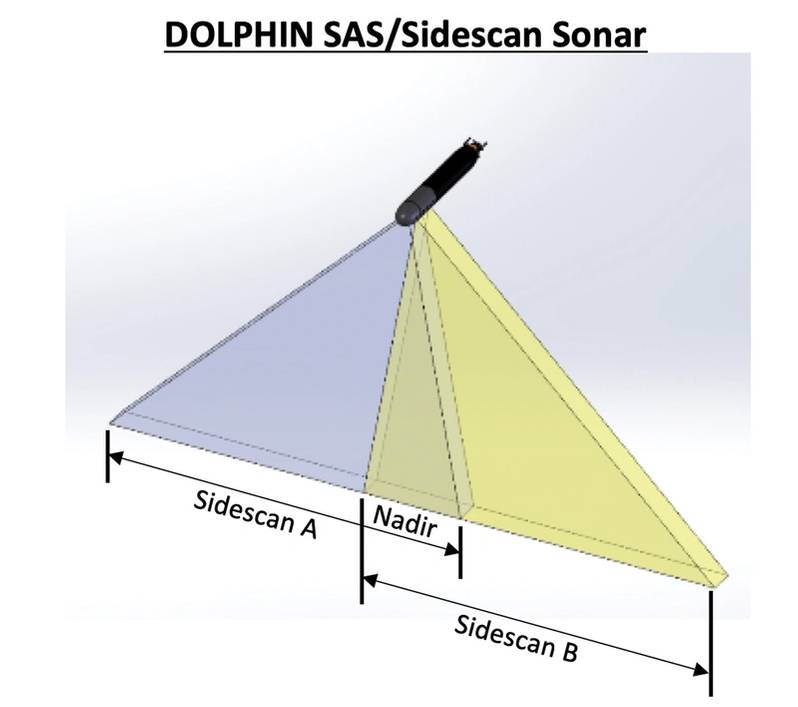 Figure 5: Two sonar swaths overlapping with DOLPHIN™ processing fill the typical nadir gap. Image: QinetiQ North AmericaPractical Applications
Figure 5: Two sonar swaths overlapping with DOLPHIN™ processing fill the typical nadir gap. Image: QinetiQ North AmericaPractical Applications
The DOLPHIN processing technology can be applied to communications, sonar, and telemetry systems. In practice this will yield benefits to many markets and applications. Military operations will benefit from networking, clandestine communications, improved throughput, and increased tolerance for difficult acoustic conditions. One could envision DOLPHIN enabled networks of unmanned systems more quickly and reliably finding and neutralizing mines in deep waters and in the surf zone. Commercially the oil and gas, and to a lesser extent offshore renewables, are looking to seafloor resident systems for both installation and inspection, maintenance and repair (IMR). These underwater applications will benefit immensely from the utility, position navigation and timing (PNT) and data connectivity, taken for granted by mobile devices connected to conventional satellite and radio networks.These markets will also benefit from improved sonar. Mine hunting coverage rates will increase with faster sonar advance speed and the systems will not have to survey twice to fill the SSS/SAS “gaps.” Energy infrastructure will be quickly mapped to support operations and maintenance needs. Ocean science and exploration will benefit from increased mapping coverage rate. DOLPHIN will improve upon limited ocean mapping coverage to date.
DOLPHIN Comms is a transformational technology that enables full duplex acoustic underwater communication and improved sonar systems. The technology has been validated in field trials. There are ongoing applications and development projects planned in defense applications.
Commercial and scientific applications and trials are of great interest. While the core technology is ready, the many layers of product and “system of systems” developments will evolve over time. A robust ecosystem of hardware manufacturers, software developers and end users must mature around the underlying, enabling technology. With appropriate, collaborative effort, it is reasonable to assume that many products and applications will become DOLPHIN enabled.
Author Biographies
Justin Manley is a technologist and executive with experience in startup, public corporation, academic, and public sectors. After professional roles at MIT, supporting NOAA and in the private sector he founded Just Innovation Inc. in 2015 to support a variety of clients with a focus on unmanned and undersea systems.
Michael Murphree is the Communications and Surveillance Technology Manager for Maritime Systems at QinetiQ North America. Michael has a wealth of experience in undersea systems engineering, software and automation as well as his current work with acoustic communications.
Greg Folts is Director of Business Development for Maritime Systems at QinetiQ North America. He has over 30 years experience in unmanned systems and mine warfare as an engineer and a program manager for the US Navy. Greg has been engaged in the private sector defense community, with a focus on unmanned systems and sonar technology since 2007. -
- MTR 100: Sensor Technology Ltd. Marine Technology, Jul 2014 #67
from concept, to prototyping, to full-scale production. The Tech Sensor Technology Ltd. manufactures components for sonar arrays and other acoustic systems. • Sensor Technology Ltd. manufactures a wide array of piezoelectric ceramic materials. The company produces hard and soft PZT (Navy Types
-
- Digital Ocean: Making Subsea Data More Easily Accessible Marine Technology, Mar 2018 #50
Platforms – Acoustics Sonardyne has developed an industry-leading wideband digital communications platform upon which most of the company’s acoustic systems are based which is now in its sixth generation (6G). The ‘pin-up’ product for this technology is the Computing and Telemetering Transponder (Compatt
-
- Underwater Acoustic Explorations At The University Of Rhode Island Maritime Reporter, Aug 15, 1977 #29
, professor of ocean engineering at the University of Rhode Island (URI), presented an enjoyable program on recent experiences with underwater acoustic systems. He described with slides how the interest and investigations of URI students, aided by such systems as side scan sonar, led to the discovery
-
- MTR100 '13 JW Fishers Mfg. Marine Technology, Jul 2013 #13
systems, ROVs, side scan sonars, scanning sonars, acoustic pingers and receivers, and pipe and cable locators. Fishers continues to expand its line of acoustic systems with the recent addition of transponders and an interrogator. The company is also constantly updating and improving the software used with its
-
- MTR100: JW Fishers Mfg. Marine Technology, Jul 2014 #12
systems, ROVs, side scan sonars, scanning sonars, acoustic pingers and receivers, and pipe and cable locators. Fishers continues to expand its line of acoustic systems with the recent addition of transponders and an interrogator. These devices are used to mark the location of underwater objects or oceanographic
-
- Maritime Surveillance: Autonomous and in Real-time Maritime Reporter, Aug 2015 #75
in June 2015, CMRE scientists and engineers worked to design, develop and demonstrate at sea concepts of continuous, real-time passive underwater acoustic systems for maritime surveillance. The objectives have been successfully met by using innovative solutions integrated on board unmanned mobile platforms
-
- MTR100: INNOMAR Technologie GmbH Marine Technology, Aug 2015 #57
be stored in industry standard formats. Optimized and user-friendly online and post-processing software is available. Innomar also develops underwater acoustic systems, electronics and software on customer’s request. Renting of equipment is possible, too. Parametric acoustics provides narrow sound beams and
-
- MTR100: INNOMAR Technologie Marine Technology, Aug 2016 #23
INNOMAR Technologie GmbH has been in the business of developing and manufacturing efficient underwater acoustic systems for about 20 years. Having sold some 300 sold systems, INNOMAR claims a place as a market leader in parametric sub-bottom profilers. INNOMAR mainly develops and manufactures high-resoluti
-
- MTR100: Falmouth Scientific, Inc Marine Technology, Aug 2016 #18
acoustic, environmental, and electronic equipment required for the design, development, production and testing of oceanographic sensors and underwater acoustic systems. Email: [email protected] www.falmouth.com (As published in the July/August 2016 MTR100 edition of Marine Technology Reporter
-
- MTR100: MetOcean Data Systems Marine Technology, Aug 2016 #60
, specializes in the production of air-deployed and ship-deployed drifting buoys, search and rescue buoys, oil spill tracking buoys, ice platforms and acoustic systems and defense and security systems. The company’s head office is located in Dartmouth, Nova Scotia, Canada. The proximity of its facility to
-
- MTR100: PERSEUS Marine Technology, Aug 2015 #24
in June 2015, CMRE scientists and engineers worked to design, develop and demonstrate at sea concepts of continuous, real-time passive underwater acoustic systems for maritime surveillance. The objectives have been successfully met by using innovative solutions integrated on board unmanned mobile platforms
-
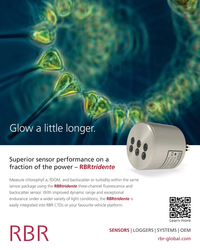 )
March 2024 - Marine Technology Reporter page: 4th Cover
)
March 2024 - Marine Technology Reporter page: 4th CoverGlow a little longer. Superior sensor performance on a rmance on a – – RBRtridentfraction of the power RBRtridente teee ackscatter or turbidity with hi i in n n t t th h h he e e s sa a am m m me Measure chlorophyll a, fDOM, and backscatter or turbidity within the same e e sensor package using the
-
 )
March 2024 - Marine Technology Reporter page: 48
)
March 2024 - Marine Technology Reporter page: 48Index page MTR MarApr2024:MTR Layouts 4/4/2024 3:19 PM Page 1 Advertiser Index PageCompany Website Phone# 17 . . . . .Airmar Technology Corporation . . . . . . . . . .www.airmar.com . . . . . . . . . . . . . . . . . . . . . . . . . . . . . . . . .(603) 673-9570 9 . . . . . .Birns, Inc. . . . . . . . . . .
-
 )
March 2024 - Marine Technology Reporter page: 45
)
March 2024 - Marine Technology Reporter page: 45Group signed a contract with Kongsberg Discovery Unique Group signed a contract with Kongsberg Discov- ery for $1.7m of seabed mapping and compact acoustic po- sitioning technology for the APAC region. The agreement, Ocean Lander for the delivery of cNODE Transponders, µPAP SSBL COMPONENTS AND SYSTEMS syste
-
 )
March 2024 - Marine Technology Reporter page: 44
)
March 2024 - Marine Technology Reporter page: 44NEW TECH OCEANOLOGY INTERNATIONAL 2024 Image courtesy Metron/Cellula Teledyne Marine acquires Valeport: Matt Quartley, MD, Valeport and Ole Søe-Pedersen, VP & Image courtesy Teledyne Marine GM Teledyne Marine announce the deal in London. Pictured (L-R): Cellula Robotics, President, Eric Jackson, Metron
-
 )
March 2024 - Marine Technology Reporter page: 43
)
March 2024 - Marine Technology Reporter page: 43for accuracy and depth penetration. echoes, and processes the data to create sub-bottom images that are visualized and logged to ? le. NEW PRODUCTS GeoAcoustics launched the GeoPulse 2 Sub-Bottom Pro- Kongsberg Discovery debuts a new analysis tool developed ? ler, which is a new generation of GeoAcoustics
-
 )
March 2024 - Marine Technology Reporter page: 42
)
March 2024 - Marine Technology Reporter page: 42. The 2.5-turn locking sleeve has been specially crafted for seamless mating and prevention of anti-seizing. SUB BOTTOM PROFILERS Image courtesy GeoAcoustics Kongsberg Discovery introduces EM SBP software system offering sub-bottom pro? ling capability for Kongsberg’s deep- water multi beam echo sounder
-
 )
March 2024 - Marine Technology Reporter page: 41
)
March 2024 - Marine Technology Reporter page: 41Image courtesy Outland Technology Image courtesy Exail Image courtesy Submaris and EvoLogics Vehicles The ROV-1500 from Outland Technology represents a leap forward in underwater robotics, a compact remotely operated vehicle (ROV) weighing in at less than 40 lbs (19kg) the ROV- 1500 is easy to transport
-
 )
March 2024 - Marine Technology Reporter page: 40
)
March 2024 - Marine Technology Reporter page: 40payloads such as deep-water Multibeam Echosound- The new DriX O-16 bene? ts from a hybrid propulsion, redun- ers (MBES), Sub-Bottom Pro? lers (SBP), or acoustic subsea dant architecture, advanced communication systems, as well positioning and communication systems (USBL). 40 March/April 2024 MTR #3 (34-47)
-
 )
March 2024 - Marine Technology Reporter page: 39
)
March 2024 - Marine Technology Reporter page: 39Photo courtesy Global Ocean Design Figure 7 A 35Ah AGM lead-acid battery is tested using the West Mountain Radio CBA to show the effect of simply ? lling the battery voids with mineral oil as a compensating ? uid. The CBA is programmed to cut-off at a voltage of 10.50v. The top line (red) shows the
-
 )
March 2024 - Marine Technology Reporter page: 38
)
March 2024 - Marine Technology Reporter page: 38LANDER LAB #10 Photo courtesy West Mountain Radio Photo courtesy of Clarios/AutoBatteries.com Figure 6 The West Mountain Radio Computerized Battery Analyzer (CBA V) attaches to a Figure 5 laptop by a USB-B cable, and to a battery by Powerpole® Connectors. Exploded view of an AGM lead-acid battery.
-
 )
March 2024 - Marine Technology Reporter page: 37
)
March 2024 - Marine Technology Reporter page: 37miscible barrier ? uid heavier than seawater (sg=1.026) and lighter than the battery electrolyte (sg=1.265). The original cell vent cap was screwed into the top of the riser pipe to vent the gases associated with charging. Wires were soldered to the lead (Pb) posts. The lead-acid battery was additionall
-
 )
March 2024 - Marine Technology Reporter page: 36
)
March 2024 - Marine Technology Reporter page: 36LANDER LAB #10 Of special interest for marine applications, LiPo batteries are Shipping any kind of lithium battery can be a challenge, and offered in a “pouch” design, with a soft, ? at body. The pouch IATA regs vary with the batteries inside or outside an instru- is vacuum-sealed, with all voids ?
-
 )
March 2024 - Marine Technology Reporter page: 33
)
March 2024 - Marine Technology Reporter page: 33regulated industry in the world.” How- ever, commercial success depends on many factors, not least a predictable OPEX. Over the past four years, SMD has worked with Oil States Industries to calculate cost per tonne ? gures for prospective customers. Patania II uses jet water pumps to Oil States’
-
 )
March 2024 - Marine Technology Reporter page: 32
)
March 2024 - Marine Technology Reporter page: 32FEATURE SEABED MINING by a sea? oor plume from its pilot collection system test. pact, nodule collection system that utilizes mechanical and The Metals Company recently signed a binding MoU with hydraulic technology. Paci? c Metals Corporation of Japan for a feasibility study on The company’s SMD
-
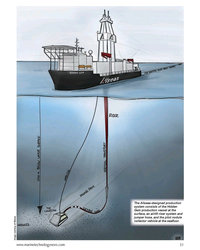 )
March 2024 - Marine Technology Reporter page: 31
)
March 2024 - Marine Technology Reporter page: 31The Allseas-designed production system consists of the Hidden Gem production vessel at the surface, an airlift riser system and jumper hose, and the pilot nodule collector vehicle at the sea? oor. Image courtesy of Allseas www.marinetechnologynews.com 31 MTR #3 (18-33).indd 31 4/4/2024 2:12:41
-
 )
March 2024 - Marine Technology Reporter page: 30
)
March 2024 - Marine Technology Reporter page: 30FEATURE SEABED MINING bilical. It has passive heave compensation which nulli? es the necott. “The focus since then has been on scaling while en- wave, current and vessel motions that in? uence loads in the suring the lightest environmental impact,” says The Metals power umbilical. The LARS can
-
 )
March 2024 - Marine Technology Reporter page: 29
)
March 2024 - Marine Technology Reporter page: 29n January, Norway said “yes” to sea- bed mining, adding its weight to the momentum that is likely to override the calls for a moratorium by over 20 countries and companies such as I Google, BMW, Volvo and Samsung. Those against mining aim to protect the unique and largely unknown ecology of the sea?
-
 )
March 2024 - Marine Technology Reporter page: 25
)
March 2024 - Marine Technology Reporter page: 25board included a deep- cano in the Tonga arc. “We’ve seen a ton per water column near the site.” towed imaging system, multicorer, CTD of landslides in acoustic data recorded (conductivity, temperature, depth), and off Kilauea and West Mata. Before that Known Unknowns autonomous ocean glider. Mackay’s fa-
-
 )
March 2024 - Marine Technology Reporter page: 23
)
March 2024 - Marine Technology Reporter page: 23have continued employing technology to better understand the behavior of submarine ERUPTION volcanoes and their seabed surroundings. “Seismology and acoustics are both the study of what we call elastic waves, in which materials vibrate when force is applied to them,” explained Caplan-Auerbach. Seismology
-
 )
March 2024 - Marine Technology Reporter page: 19
)
March 2024 - Marine Technology Reporter page: 19About the Author vey with the pipe tracker is not required, resulting in signi? - Svenn Magen Wigen is a Cathodic Protection and corrosion control cant cost savings, mainly related to vessel charter. expert having worked across The major advantage of using FiGS on any type of subsea engineering, design
-
 )
March 2024 - Marine Technology Reporter page: 18
)
March 2024 - Marine Technology Reporter page: 18TECH FEATURE IMR There are also weaknesses in terms of accuracy because of FiGS Operations and Bene? ts signal noise and the ability to detect small ? eld gradients. In Conventional approaches to evaluating cathodic protection this process there is a risk that possible issues like coating (CP)
-
 )
March 2024 - Marine Technology Reporter page: 17
)
March 2024 - Marine Technology Reporter page: 17• Integrity assessment, and otherwise covered, e.g., by rock dump. As for depletion of • Mitigation, intervention and repair. sacri? cial anodes, this can be dif? cult or even impossible to Selecting the best method for collecting the data these work- estimate due to poor visibility, the presence of
-
 )
March 2024 - Marine Technology Reporter page: 15
)
March 2024 - Marine Technology Reporter page: 15conservation, Shea Quinn is the Product Line Manager the Sentinel can run several high-energy passive and active of the Slocum Glider at Teledyne Webb acoustic sensors, on-board processing, and imaging hardware Research. Quinn came to Teledyne Webb Research from Lockheed Martin. He simultaneously for months
-
 )
March 2024 - Marine Technology Reporter page: 14
)
March 2024 - Marine Technology Reporter page: 14length to over 2 years; or users can ? t more ? ight control, and communications architecture of the Slocum high-energy sensors like active or passive acoustics, sensors Glider, and allows for the same sensor and hardware options with on-board processing, and imaging, without seeing a sig- as the standard-sized
